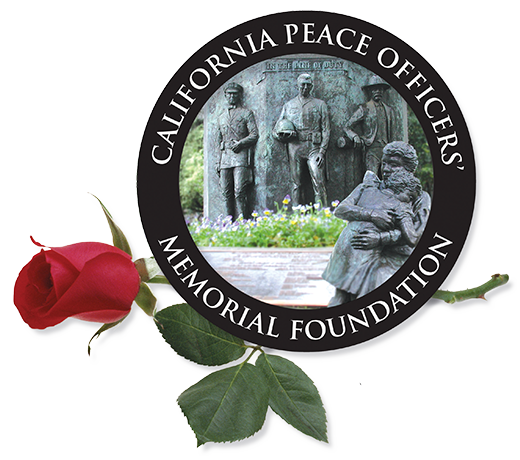The frame around his police motorcycle license plate read, “One more ticket and I get the microwave.”
Billy Jack will never get his microwave, but in three years on the Carlsbad Police Department, he won hundreds of friends from the barrio to City Hall.
Nearly 1,200 people, including more than 600 uniformed officers, gathered at Carlsbad Community Church to say farewell to William “Billy” Robert Jack.
The 30-year-old traffic officer, known to his colleagues as Billy Jack and “Billy the Kid,” died Sept. 1, 1991, of head injuries after being thrown from his motorcycle while on duty. He had been directing traffic after a labor Day weekend concert when he lost control of his motorcycle, hit a center divider, and crashed.
The joke on his license plate was typical of Jack’s sense of humor, friends said, but hardly reflected his serious dedication to his job.
“He had the zeal of a teenager,” said his supervisor, Sgt. Don Metcalf. “He was always exuberant – he could drive you crazy. He never had a bad day.”
Police Chief Bob Vales didn’t sanction the microwave joke when he discovered it a few months ago, but he decided to risk offending citizens and let Jack keep it. “I’m glad I did,” Vales said during the funeral service. “When I had the Billy Jacks of the world working for me, my job was a lot easier.”
Kids loved Jack, Vales said, and Jack loved playing the part of crime-fighting dog McGruff, running a bicycle safety class, and taking time to meet children around the city.
Frank Sorino, coach of a fledgling community boxing team for underprivileged youths whom Jack worked with, attended the funeral with several teens, saying, “It’s a loss to us, too.”
Also at the services were Mayor Bud Lewis, other city officials, and Escondido Police Chief Vincent Jimno, former chief in Carlsbad.
Jack, who lived in Oceanside, joined the department in July 1988 after two years with the Orange County Sheriff’s Department. He was engaged to marry Tina Cunniff of Oceanside.
His father, Kenneth, of Escondido, and two younger brothers, Curtis and Douglas, said William had wanted to be a police officer since he was a child.
“When we played war, he was always the Green Beret, the good guy,” remembered Douglas Jack. “He was destined to be a police officer – what else could you do when you are strong, silent, and constant?”
Their father, after telling the congregation of his pride in Jack’s accomplishments, patted his son’s flag-draped coffin in a parting caress.
Moments later, six pallbearers carried the coffin through a double row of uniformed Carlsbad officers to a waiting hearse as hundreds of other officers stood in the street, saluting.
Enroute to Eternal Hills Cemetery in Oceanside for Jack’s burial, a phalanx of nearly 100 motorcycle officers led a procession of nearly 100 more patrol cars from nearly every city in the county, plus Laguna Niguel, Atascadero, San Clemente, and Laguna Beach. The Border Patrol, California Highway Patrol, county marshals, State Park personnel, lifeguards, and the Carlsbad Fire Department also were represented.
Jack was born in San Jose on Feb. 28, 1961 and graduated from high school in Falmouth, Mass in 1979.
He worked for the Orange County Sheriff’s Department before joining the department in Carlsbad, where he was assigned to its traffic division in April.
Jack is survived by his mother, Annine Jack, of Oceanside; father, Kenneth Jack, of Escondido; brothers Curtis Jack of Oceanside and Douglas Jack, of Lake Buena Vista, Fla.; and grandparents Mr. and Mrs. James H. Jack of Southbury, Conn.
